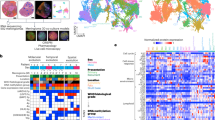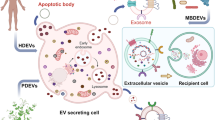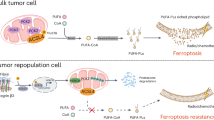Abstract
Neuroblastoma is a highly metastatic cancer, and thus is one of the leading causes of cancer-related mortalities in pediatric patients. More than 50% of NB cases exhibit 17q21-ter partial chromosomal gain, which is independently associated with poor survival, suggesting the clinical importance of genes at this locus in NB. IGF2BP1 is one such proto-oncogene located at 17q locus, and was found to be upregulated in patients with metastatic NBs. Here, utilizing multiple immunocompetent mouse models, along with our newly developed highly metastatic NB cell line, we demonstrate the role of IGF2BP1 in promoting NB metastasis. Importantly, we show the significance of small extracellular vesicles (EVs) in NB progression, and determine the pro-metastatic function of IGF2BP1 by regulating the NB-EV-protein cargo. Through unbiased proteomic analysis of EVs, we discovered two novel targets (SEMA3A and SHMT2) of IGF2BP1, and reveal the mechanism of IGF2BP1 in NB metastasis. We demonstrate that IGF2BP1 directly binds and governs the expression of SEMA3A/SHMT2 in NB cells, thereby modulating their protein levels in NB-EVs. IGF2BP1-affected levels of SEMA3A and SHMT2 in the EVs, regulate the formation of pro-metastatic microenvironment at potential metastatic organs. Finally, higher levels of SEMA3A/SHMT2 proteins in the EVs derived from NB-PDX models indicate the clinical significance of the two proteins and IGF2BP1-SEMA3A/SHMT2 axis in NB metastasis.
This is a preview of subscription content, access via your institution
Access options
Subscribe to this journal
Receive 50 print issues and online access
$259.00 per year
only $5.18 per issue
Buy this article
- Purchase on Springer Link
- Instant access to full article PDF
Prices may be subject to local taxes which are calculated during checkout






Similar content being viewed by others
Data availability
Data generated in the study are available within the article and its Supplementary data files. Raw EV-mass spectrometry data are available upon request from the corresponding author.
References
Nakagawara A, Li YY, Izumi H, Muramori K, Inada H, Nishi M. Neuroblastoma. Jpn J Clin Oncol. 2018;48:214–41.
Irwin MS, Park JR. Neuroblastoma: paradigm for precision medicine. Pediatr Clin North Am. 2015;62:225–56.
Cohn SL, Pearson ADJ, London WB, Monclair T, Ambros PF, Brodeur GM, et al. The international neuroblastoma risk group (INRG) classification system: an INRG task force report. J Clin Oncol. 2009;27:289–97.
Bown N, Cotterill S, Lastowska M, O’Neill S, Pearson ADJ, Plantaz D, et al. Gain of chromosome arm 17q and adverse outcome in patients with neuroblastoma. N. Engl J Med. 1999;340:1954–61.
Bown N, Lastowska M, Cotterill S, O’Neill S, Ellershaw C, Roberts P, et al. 17q gain in neuroblastoma predicts adverse clinical outcome. Med Pediatr Oncol. 2001;36:14–9.
Bell JL, Turlapati R, Liu T, Schulte JH, Huttelmaier S. IGF2BP1 harbors prognostic significance by gene gain and diverse expression in neuroblastoma. J Clin Oncol. 2015;33:1285.
Noubissi FK, Elcheva I, Bhatia N, Shakoori A, Ougolkov A, Liu JH, et al. CRD-BP mediates stabilization of beta TrCP1 and c-myc mRNA in response to beta-catenin signalling. Nature. 2006;441:898–901.
Zirkel A, Lederer M, Stohr N, Pazaitis N, Huttelmaier S. IGF2BP1 promotes mesenchymal cell properties and migration of tumor-derived cells by enhancing the expression of LEF1 and SNAI2 (SLUG). Nucleic Acids Res. 2013;41:6618–36.
Elcheva IA, Wood T, Chiarolanzio K, Chim B, Wong MD, Singh V, et al. RNA-binding protein IGF2BP1 maintains leukemia stem cell properties by regulating HOXB4, MYB, and ALDH1A1. Leukemia. 2020;34:1354–63.
Yaniv K, Fainsod A, Kalcheim C, Yisraeli JK. The RNA binding protein Vg1 RBP is required for cell migrations during early neural development. Dev Biol. 2003;259:483–83.
Bell JL, Wachter K, Muleck B, Pazaitis N, Kohn M, Lederer M, et al. Insulin-like growth factor 2 mRNA-binding proteins (IGF2BPs): post-transcriptional drivers of cancer progression? Cell Mol Life Sci. 2013;70:2657–75.
Goswami S, Tarapore RS, Poenitzsch Strong AM, TeSlaa JJ, Grinblat Y, Setaluri V, et al. MicroRNA-340-mediated degradation of microphthalmia-associated transcription factor (MITF) mRNA is inhibited by coding region determinant-binding protein (CRD-BP). J Biol Chem. 2015;290:384–95.
Elcheva I, Tarapore RS, Bhatia N, Spiegelman VS. Overexpression of mRNA-binding protein CRD-BP in malignant melanomas. Oncogene. 2008;27:5069–74.
Vainer G, Vainer-Mossel E, Pkarsky A, Shenoy SM, Oberman F, Yeffet A, et al. A role for VICKZ proteins in the progression of colorectal carcinomas: regulating lamellipodia formation. J Pathol. 2008;215:445–56.
Stohr N, Huttelmaier S. IGF2BP1 A post-transcriptional “driver” of tumor cell migration. Cell Adhes Migr. 2012;6:312–8.
Hamilton KE, Noubissi FK, Katti PS, Hahn CM, Davey SR, Lundsmith ET, et al. IMP1 promotes tumor growth, dissemination and a tumor-initiating cell phenotype in colorectal cancer cell xenografts. Carcinogenesis. 2013;34:2647–54.
Singh V, Gowda CP, Singh V, Ganapathy AS, Karamchandani DM, Eshelman MA, et al. The mRNA-binding protein IGF2BP1 maintains intestinal barrier function by up-regulating occludin expression. J Biol Chem. 2020;295:8602–12.
Biegel JM, Dhamdhere M, Gao S, Gowda CP, Kawasawa YI, Spiegelman VS. Inhibition of the mRNA-binding protein IGF2BP1 suppresses proliferation and sensitizes neuroblastoma cells to chemotherapeutic agents. Front Oncol. 2021;11:608816.
Wortzel I, Dror S, Kenific CM, Lyden D. Exosome-mediated metastasis: communication from a distance. Dev Cell. 2019;49:347–60.
Azmi AS, Bao B, Sarkar FH. Exosomes in cancer development, metastasis, and drug resistance: a comprehensive review. Cancer Metastasis Rev. 2013;32:623–42.
Costa-Silva B, Aiello NM, Ocean AJ, Singh S, Zhang HY, Thakur BK, et al. Pancreatic cancer exosomes initiate pre-metastatic niche formation in the liver. Nat Cell Biol. 2015;17:816.
Kalluri R, LeBleu VS. The biology, function, and biomedical applications of exosomes. Science. 2020;367:eaau6977.
McAndrews KM, Kalluri R. Mechanisms associated with biogenesis of exosomes in cancer. Mol Cancer. 2019;18:52.
Peinado H, Kovic MA, Lavotshkin S, Matei I, Costa-Silva B, Moreno-Bueno G, et al. Melanoma exosomes educate bone marrow progenitor cells toward a pro-metastatic phenotype through MET. Nat Med. 2012;18:883.
Guo YX, Ji X, Liu JB, Fan DD, Zhou QB, Chen C, et al. Effects of exosomes on pre-metastatic niche formation in tumors. Mol Cancer. 2019;18:39.
Morini M, Cangelosi D, Segalerba D, Marimpietri D, Raggi F, Castellano A, et al. Exosomal microRNAs from longitudinal liquid biopsies for the prediction of response to induction chemotherapy in high-risk neuroblastoma patients: a proof of concept SIOPEN study. Cancers. 2019;11:1476.
Vikesaa J, Hansen TVO, Jonson L, Borup R, Wewer UM, Christiansen J, et al. RNA-binding IMPs promote cell adhesion and invadopodia formation. Embo J. 2006;25:1456–68.
Théry C, Witwer KW, Aikawa E, Alcaraz MJ, Anderson JD, Andriantsitohaina R, et al. Minimal information for studies of extracellular vesicles 2018 (MISEV2018): a position statement of the International Society for Extracellular Vesicles and update of the MISEV2014 guidelines. J Extracell Vesicles. 2018;7:1535750.
Glass M, Misiak D, Bley N, Muller S, Hagemann S, Busch B, et al. IGF2BP1, a conserved regulator of RNA turnover in cancer. Front Mol Biosci. 2021;8:632219.
Elcheva I, Goswami S, Noubissi FK, Spiegelman VS. CRD-BP protects the coding region of betaTrCP1 mRNA from miR-183-mediated degradation. Mol Cell. 2009;35:240–6.
Noubissi FK, Goswami S, Sanek NA, Kawakami K, Minamoto T, Moser A, et al. Wnt signaling stimulates transcriptional outcome of the Hedgehog pathway by stabilizing GLI1 mRNA. Cancer Res. 2009;69:8572–8.
Weiss WA, Aldape K, Bishop JM. Targeted expression of MYCN causes neuroblastoma in transgenic mice. Eur J Cancer. 1997;33:2137–37.
Stauffer JK, Lincoln E, Greer B, Khan T, Salcedo R, Hixon JA, et al. Molecular profiling of a novel transplantable model of murine neuroblastoma. J Immunother. 2006;29:682–3.
Ghoshal A, Rodrigues LC, Gowda CP, Elcheva IA, Liu ZQ, Abraham T, et al. Extracellular vesicle-dependent effect of RNA-binding protein IGF2BP1 on melanoma metastasis. Oncogene. 2019;38:4182–96.
Sahai E, Astsaturov I, Cukierman E, DeNardo DG, Egeblad M, Evans RM, et al. A framework for advancing our understanding of cancer-associated fibroblasts. Nat Rev Cancer. 2020;20:174–86.
Libring S, Shinde A, Chanda MK, Nuru M, George H, Saleh AM, et al. The dynamic relationship of breast cancer cells and fibroblasts in fibronectin accumulation at primary and metastatic tumor sites. Cancers. 2020;12:1270.
He CS, Wang LN, Li L, Zhu GQ. Extracellular vesicle-orchestrated crosstalk between cancer-associated fibroblasts and tumors. Transl Oncol. 2021;14:101231.
Giusti I, Di Francesco M, Poppa G, Esposito L, D’Ascenzo S, Dolo V. Tumor-derived extracellular vesicles activate normal human fibroblasts to a cancer-associated fibroblast-like phenotype, sustaining a pro-tumorigenic microenvironment. Front Oncol. 2022;12:839880.
Zhang XL, Klamer B, Li J, Fernandez S, Li L. A pan-cancer study of class-3 semaphorins as therapeutic targets in cancer. Bmc Med Genomics. 2020;13:45.
Yazdani U, Terman JR. The semaphorins. Genome Biol. 2006;7:211.
Treps L, Edmond S, Harford-Wright E, Galan-Moya EM, Schmitt A, Azzi S, et al. Extracellular vesicle-transported Semaphorin3A promotes vascular permeability in glioblastoma. Oncogene. 2016;35:2615–23.
Leclerc M, Voilin E, Gros G, Corgnac S, de Montpreville V, Validire P, et al. Regulation of antitumour CD8 T-cell immunity and checkpoint blockade immunotherapy by Neuropilin-1. Nat Commun. 2019;10:3345.
Wu ZZ, Wang S, Yang QC, Wang XL, Yang LL, Liu B, et al. Increased expression of SHMT2 is associated with poor prognosis and advanced pathological grade in oral squamous cell carcinoma. Front Oncol. 2020;10:588530.
Han W, Wang S, Qi Y, Wu F, Tian N, Qiang B, et al. Targeting HOTAIRM1 ameliorates glioblastoma by disrupting mitochondrial oxidative phosphorylation and serine metabolism. iScience. 2022;25:104823.
Wallis N, Oberman F, Shurrush K, Germain N, Greenwald G, Gershon T, et al. Small molecule inhibitor of Igf2bp1 represses Kras and a pro-oncogenic phenotype in cancer cells. Rna Biol. 2022;19:26–43.
Gharaibeh B, Lu A, Tebbets J, Zheng B, Feduska J, Crisan M, et al. Isolation of a slowly adhering cell fraction containing stem cells from murine skeletal muscle by the preplate technique. Nat Protoc. 2008;3:1501–9.
McAlister GC, Nusinow DP, Jedrychowski MP, Wuhr M, Huttlin EL, Erickson BK, et al. MultiNotch MS3 enables accurate, sensitive, and multiplexed detection of differential expression across cancer cell line proteomes. Anal Chem. 2014;86:7150–8.
Askeland A, Borup A, Ostergaard O, Olsen JV, Lund SM, Christiansen G, et al. Mass-spectrometry based proteome comparison of extracellular vesicle isolation methods: comparison of ME-kit, size-exclusion chromatography, and high-speed centrifugation. Biomedicines. 2020;8:246.
Burton JB, Carruthers NJ, Hou Z, Matherly LH, Stemmer PM. Pattern analysis of organellar maps for interpretation of proteomic data. Proteomes. 2022;10:18.
Ritchie ME, Phipson B, Wu D, Hu Y, Law CW, Shi W, et al. limma powers differential expression analyses for RNA-sequencing and microarray studies. Nucleic Acids Res. 2015;43:e47.
Acknowledgements
The authors are thankful to Dr. Paul Sondel’s lab for the generous gift of reagents, Venkatesha Basrur and University of Michigan mass-spectrometry core for help with EV-mass spec. We also thank Joe Bednarczyk and Flow-Cytometry Core, Han Chen and TEM Facility, and Molecular & Histopathology Core services at Penn State College of Medicine for help with cell-sorting, TEM and tissue mounting, respectively.
Funding
This study was supported by the NIH grant R01 CA243167 (VSS), and Four Diamonds Fund (VSS).
Author information
Authors and Affiliations
Contributions
MRD: study design, data curation, methodology, formal analysis, validation, investigation, visualization, writing-original draft, revision; CPG, VS: methodology, data curation; NC, ZL: data curation, bioinformatic analysis; CNG: manuscript reviewing, data curation; JMS, AS, SD: resources, manuscript reviewing; HGW: manuscript reviewing; VSS: conception and design, study supervision, funding acquisition, writing-review & revision, project administration.
Corresponding author
Ethics declarations
Competing interests
The authors declare no competing interests.
Additional information
Publisher’s note Springer Nature remains neutral with regard to jurisdictional claims in published maps and institutional affiliations.
Supplementary information
Rights and permissions
Springer Nature or its licensor (e.g. a society or other partner) holds exclusive rights to this article under a publishing agreement with the author(s) or other rightsholder(s); author self-archiving of the accepted manuscript version of this article is solely governed by the terms of such publishing agreement and applicable law.
About this article
Cite this article
Dhamdhere, M.R., Gowda, C.P., Singh, V. et al. IGF2BP1 regulates the cargo of extracellular vesicles and promotes neuroblastoma metastasis. Oncogene 42, 1558–1571 (2023). https://doi.org/10.1038/s41388-023-02671-0
Received:
Revised:
Accepted:
Published:
Issue Date:
DOI: https://doi.org/10.1038/s41388-023-02671-0
This article is cited by
-
IGF2BP1 induces neuroblastoma via a druggable feedforward loop with MYCN promoting 17q oncogene expression
Molecular Cancer (2023)
-
RNA binding protein IGF2BP1 synergizes with ETV6-RUNX1 to drive oncogenic signaling in B-cell Acute Lymphoblastic Leukemia
Journal of Experimental & Clinical Cancer Research (2023)



